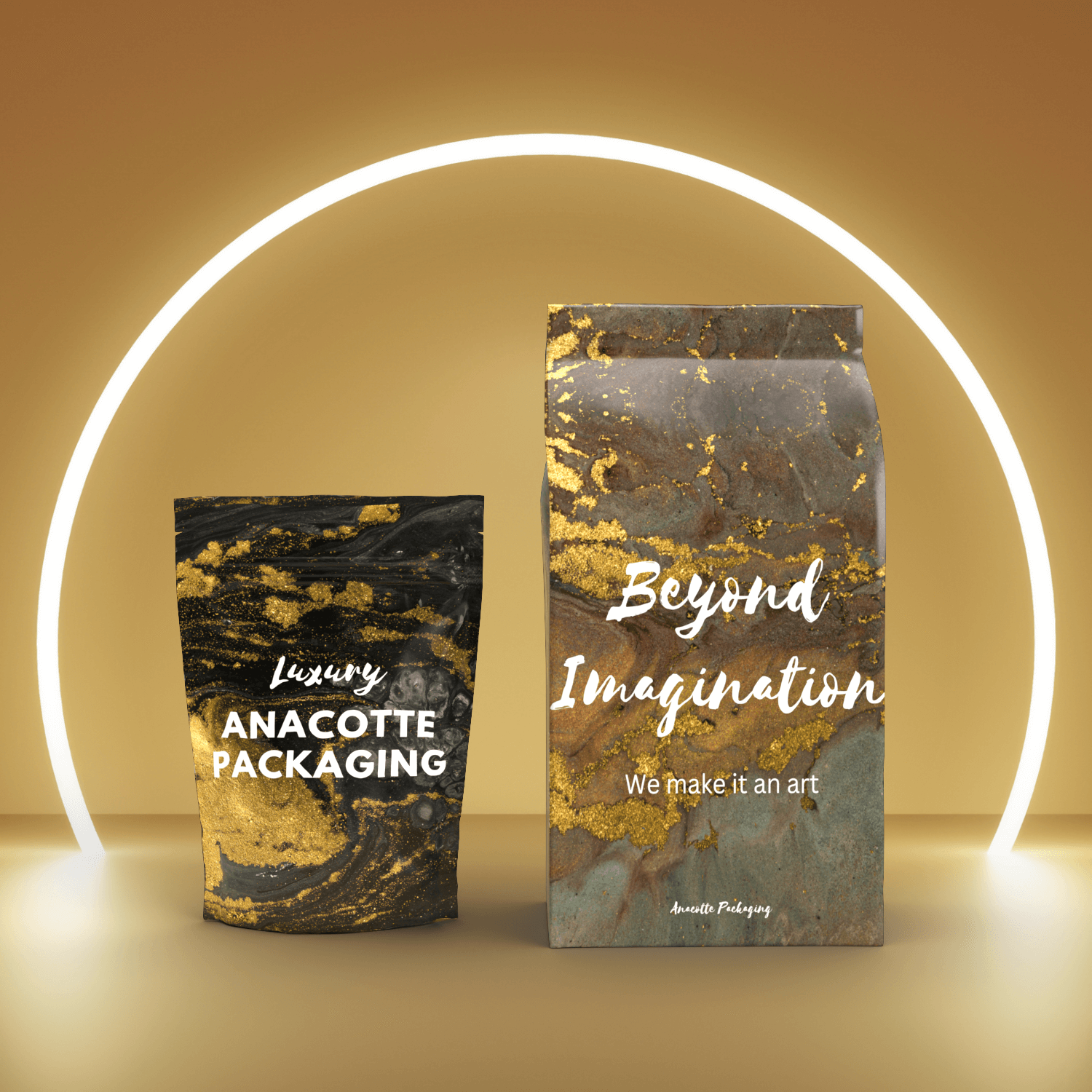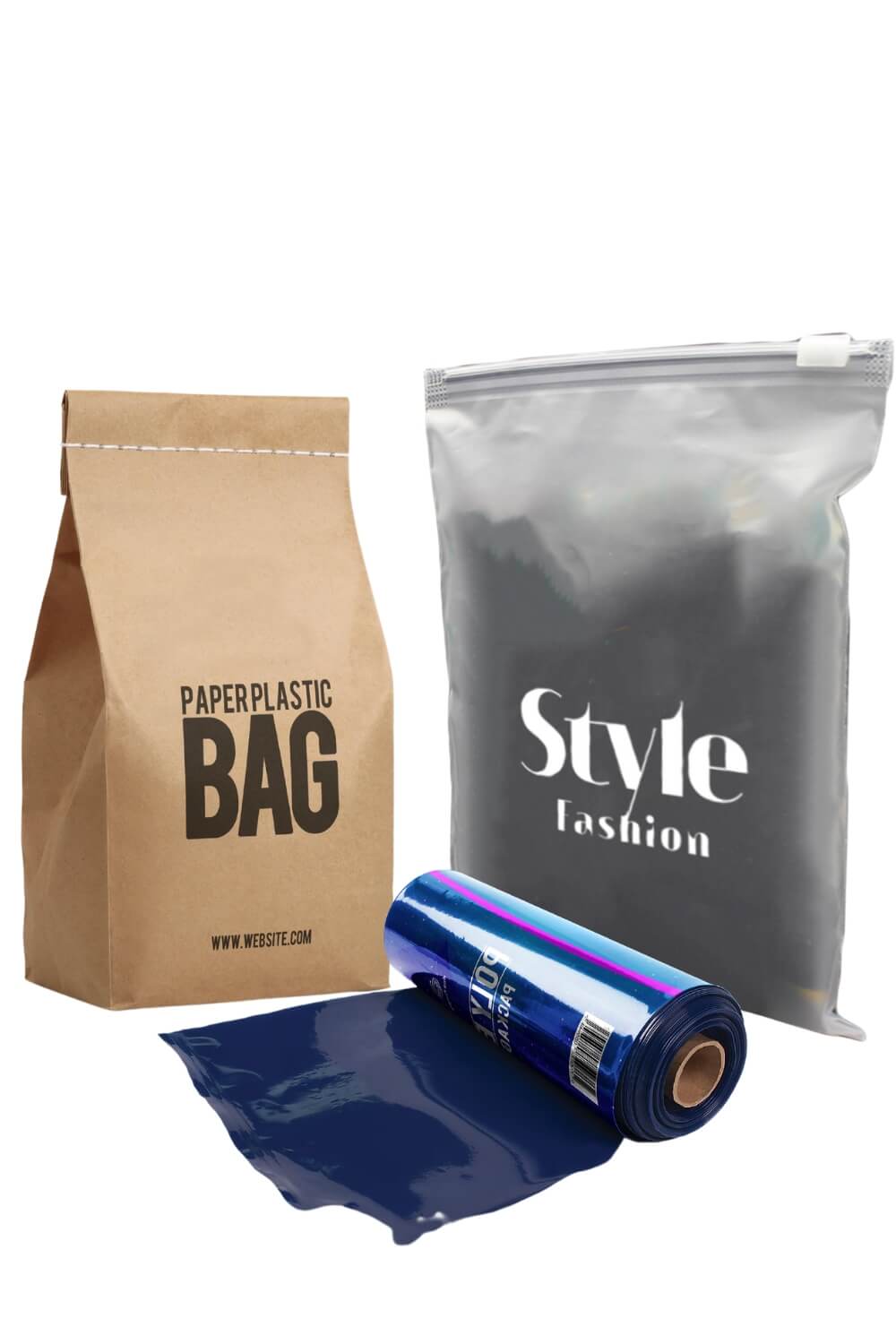
We make it an artwork
Turn your design into an artwork is how we convert and improve your product packaging.
Our Most Common Flexible Packaging Materials and Structures
Flexible packaging materials are typically made from plastics, such as polyethylene or polypropylene, or from aluminum foil. These materials are chosen for their ability to be easily molded and shaped, as well as their durability and resistance to moisture and other environmental factors. In addition, many flexible packaging materials are treated with coatings or laminates to improve their barrier properties, such as their ability to block moisture or oxygen, or to provide additional strength or flexibility. Some flexible packaging materials may also include other ingredients, such as colorants, stabilizers, or adhesives, depending on the specific application.
Learn about Material LaminationPolyethylene(PE) is a versatile and inexpensive plastic that is commonly used in flexible packaging. It is often used for packaging liquids and powders, and is available in a range of thicknesses and strengths to suit different applications.
Polypropylene(PP) is a lightweight and durable plastic that is often used for packaging dry goods, such as snacks and cereals. It is resistant to moisture, chemicals, and UV light, making it a good choice for protecting food products
Polyethylene terephthalate(PET) is a strong and transparent plastic that is commonly used for packaging beverages, such as water and soda. It is also used for packaging other products, such as electronics and medical devices.
The key advantage of kraft paper is its strength and durability. It is resistant to tearing and can withstand rough handling, making it well-suited for use in packaging applications. It is also moisture-resistant, which makes it a good choice for use in construction and other applications where it may be exposed to water. In addition, kraft paper is biodegradable and can be recycled, making it an environmentally friendly choice for many applications.
Aluminum foil is a thin sheet of metal that is often used in flexible packaging. Aluminum has many desirable properties for packaging, including being lightweight, durable, and resistant to corrosion and chemical reactions, making it a good choice for packaging perishable food products. Additionally, aluminum is a good barrier against moisture, light, and gases, which helps to preserve the freshness and flavor of the packaged product. Because it is 100% recyclable, it is a sustainable packaging option.
PLA, or Polylactic Acid, is a biodegradable thermoplastic made from renewable resources such as corn starch, sugarcane, or cassava. It is an innovative bioplastics that are plant based and fully sustainable. PLA is a popular alternative to traditional petroleum-based plastics because it is more environmentally friendly, as it can be broken down by microorganisms and does not release harmful chemicals into the environment.
PBAT (Polybutylene Adipate Terephthalate) and PBS (Polybutylene Succinate) are both thermoplastic polyester resins made from the monomers adipic acid and 1,4-butanediol. PBAT is a copolyester of adipic acid, 1,4-butanediol, and terephthalic acid, while PBS is a copolyester of adipic acid and 1,4-butanediol. Both materials have a similar glass transition temperature and melting point and are both strong, stiff, and heat-resistant. However, PBS has a lower melting point and a higher water absorption rate than PBAT. Both materials are used in a variety of applications such as bioplastics film, fibers, and molded parts for sustainability purposes.
PCL (polycaprolactone) is a biodegradable thermoplastic polymer that is commonly used in medical implants, drug delivery systems, and can be a blending material to improve the barriers and properties for bioplastics applications. It is known for its good biocompatibility, and ability to degrade in the body over time.
PGA (polyglycolic acid) is another biodegradable thermoplastic polymer that is being used in sustainable packaging industry. It is known for its high strength and rapid degradation in the body. Like PCL, it can be blended with PLA, PBAT, and PBS to create bioplastics packaging structure.
PHA stands for polyhydroxyalkanoate, which is a new biodegradable and biocompatible polymer that can be produced by microorganisms such as bacteria. It is fully compostable and it can be used in a variety of applications, including as a substitute for plastics in products such as packaging and disposable consumer goods.
Laminated materials are made by bonding multiple layers of different materials together. They are often used in flexible packaging to provide added strength, barrier properties, or other desired characteristics. For example, a laminated material might consist of a layer of PE, a layer of aluminum foil, and a layer of kraft paper or another material.
Eco-conscious
We make it Green
There has been a growing emphasis on using eco-friendly materials in flexible packaging and we are making it viable,
100%
Compostable Materials
Some materials commonly used in flexible packaging that are compostable include cellulose, biodegradable plastics, and paper-based materials. These materials are considered more eco-friendly than traditional plastic packaging, as they do not contribute to the pollution of the environment. These materials can be broken down by microorganisms into natural substances, allowing them to be composted in industrial composting facilities. However, the effectiveness of compostable plastics in reducing waste and protecting the environment can vary depending on a variety of factors, such as how they are produced, used, and disposed of.
100%
Recyclable Materials
In the context of flexible packaging, recyclable materials are typically plastics, such as polyethylene and polypropylene, which can be collected, sorted, and processed into new packaging materials or other products. Using recyclable materials in flexible packaging can help to reduce the demand for new raw materials and can reduce the amount of waste that ends up in landfills. This can contribute to a more eco-friendly packaging system, as it can help to reduce the overall environmental impact of packaging and can support the development of a circular economy. However, the effectiveness of recycling in reducing waste and protecting the environment can vary depending on a variety of factors, such as how materials are collected, sorted, and processed.
100%
Biodegradable Materials
In the context of flexible packaging, biodegradable materials are typically plastics that are designed to break down more easily in the environment. This can include materials such as biodegradable polyethylene, polylactic acid (PLA), and starch-based plastics. These materials are generally considered to be more eco-friendly than traditional plastic packaging, as they can reduce the amount of waste that ends up in landfills and can help to reduce the overall environmental impact of packaging. However, the effectiveness of biodegradable plastics in reducing waste and protecting the environment can vary depending on a variety of factors, such as how they are produced, used, and disposed of.
Bioplastics & Paper Structure
Both bioplastics and paper have their own unique properties and characteristics. Bioplastics, for example, may be more flexible and versatile than paper plastics, while paper plastics may be slightly stronger and slightly more durable. However, their strength and durability can't be compared to typical plastics.
Using biodegradable plastics in flexible packaging can provide several benefits. For one, biodegradable plastics are better for the environment than traditional plastics, which can take hundreds of years to break down and may potentially cause pollution. Additionally, biodegradable plastics can be composted along with food waste, reducing the amount of waste that goes to landfills.
Another benefit of biodegradable plastics in flexible packaging is that they can help companies meet sustainability goals and reduce their environmental impact. This can be attractive to consumers who are increasingly concerned about the environmental impact of the products they buy.
However, breaking down bioplastics in some cases, may require specialized conditions, such as high temperatures and the presence of certain microorganisms, in order to break down properly. If these conditions are not present, the plastic may not break down at all, or may take a very long time to do so.
Additionally, biodegradable plastics may not be as durable or long-lasting as traditional plastics. This can be a problem for applications where the plastic needs to maintain its strength and integrity over a long period of time, and it is easily breakable and to be torn.
Paper is biodegradable in its nature and can be easily broken down and returned to the environment by natural processes. This makes it a more sustainable alternative to traditional plastics, which can take hundreds of years to break down and can cause pollution.
Another advantage of paper packaging is that it can be composted along with food waste. This reduces the amount of waste that goes to landfills and can help companies meet sustainability goals and reduce their environmental impact.
On the other hand, paper packaging is strong and durable than bioplastics. It can protect the products being packaged and maintain their quality and freshness.
Paper may require a bit more extra cost than plastics, paper packaging may not be as waterproof or moisture-resistant as traditional plastics. This can be an issue for products that need to be protected from moisture or other liquids.
Another potential disadvantage is that paper packaging may not always be as strong or durable as traditional plastics. In some cases, it may not be able to withstand the same level of wear and tear or protect the product as well. This can be a problem for applications where the packaging needs to maintain its strength and integrity over a long period of time.


